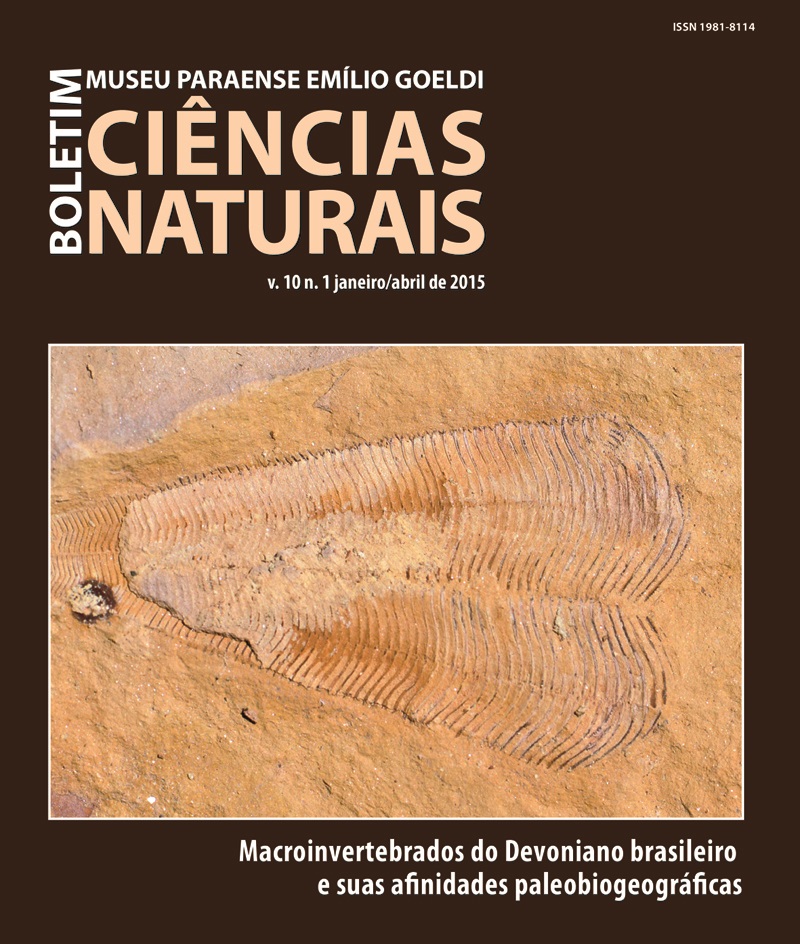Paleobiogeographic observations based on Devonian brachiopods (Delthyridoidea, Strophodontoidea and Chonetoidea) of the Amazon and Parnaíba basins
DOI:
https://doi.org/10.46357/bcnaturais.v10i1.496Keywords:
Brachiopod, Devonian, Paleobiogeography, Amazonas and Parnaíba basins, Chonetoidea, StrophodontoideaAbstract
Systematic revisions of Devonian brachiopods of the Amazon and Parnaíba basins reinforced the previous observations of the coexistence of the Eastern Americas, Old World and Malvinokaffric Realms forms, besides endemic forms in both basins. A possible cause of this mixed composition is the paleogeographic position of the Brazilian basins, and especially the Eifelian-Givetian age of macrofaunas coincident with those estimated for the disappearance of Malvinokaffric and Eastern Americas Realms. Strophodontoids were abundant in Early-Middle Devonian of the Eastern Americas and Old World Realms, while in Brazil the few forms identified are restricted to Maecuru Formation. The absence of these forms in the others formations here discussed, together with the presence of the Malvinokaffric genus in these formations, expands the probable influence of the Malvinokaffric Eifelian faunas in the basins of the North and Northeast of Brazil. Among Chonetoidea, a similar pattern was observed between the forms and dynamics of mixed faunas of the brazilian formations cited above with those of south-Saharan region in northwest Africa. Interesting is also the relationship of these Brazilian paleofaunas with those of Armorica (North Gondwanan Europe) in the Devonian. Some taxa of brachiopods and crinoids, suggest a faunal exchange between these regions during this time.
Downloads
Published
Issue
Section
License
Publication means fully assigning and transferring all copyrights of the manuscript to the journal. The Liability Statement and
Assignment of Copyrights will be enclosed with the notice of acceptance. All the authors must sign the document and return it to the journal.








